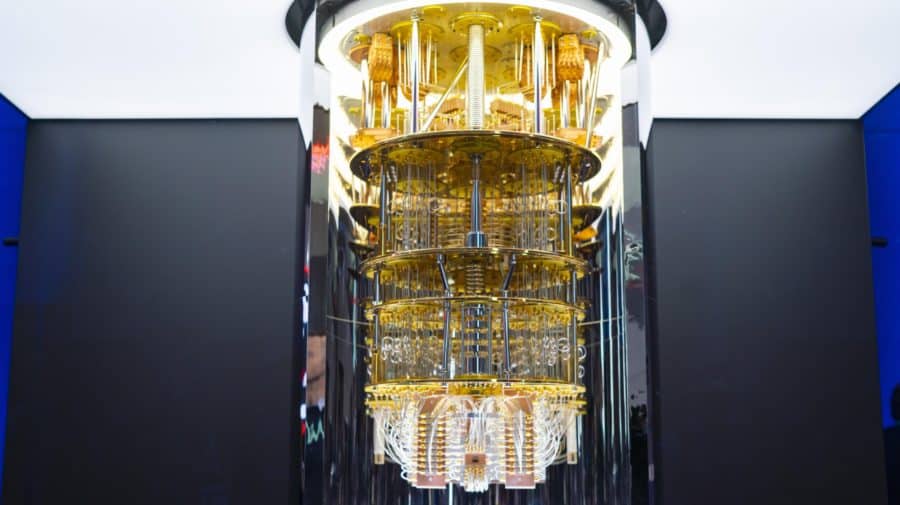
Using the IBM Q computer, physicists at EPFL have verified for the first time the tight relationship between quantum entanglement and wave-particle duality, showing that the former controls the latter in a quantum system.
“It is possible to do experiments in fundamental physics on the remotely accessible IBM Q quantum computer,” says Marc-André Dupertuis, a physicist at EPFL’s School of Basic Sciences. Working with Nicolas Schwaller, a Master student in Physics at EPFL, and Clément Javerzac-Galy, co-CEO of photonics company Miraex, the three scientists carried out their work by studying a system made of two separate quantum elements, represented in the IBM Q as superconducting quantum bits.
EPFL already has a longstanding relationship with IBM’s famed quantum computer, with two teams of students placing second in the annual “IBM Q competition” in 2018 and 2020.
The work is published in Physical Reviews A. “We were able to indirectly confirm that the duality of each quantum bit can be turned off completely, or set to any desired amount by controlling the degree of entanglement of the pair,” says Dupertuis.
Quantum revolution #1: Wave-particle duality
Wave-particle duality is the idea that every particle or quantum entity may be described as either a particle or a wave, with the most famous examples being photons (light particles) and electrons. The concept has been debated since the early ages of quantum mechanics, and catalyzed the first quantum revolution at the start of the 20th century, driven by a historic debate between legendary physicists Albert Einstein and Niels Bohr.
Throughout the past century, experiments have highlighted the extremely counter-intuitive aspects of wave-particle duality, epitomized by the “double slit” Young experiment for electrons showing that matter could indeed behave not only as a particle but alternatively as a wave, and which is sometimes referred to as the “most beautiful experiment in physics”.
Quantum revolution #2: Quantum entanglement
But then, a second quantum revolution began in the 1930s, when Einstein and Erwin Schrödinger discovered an even more bizarre phenomenon: quantum entanglement, which occurs when two or more particles share a single composite quantum state even when they are separated over cosmic distances.
Entanglement really took over scientific and lay imagination when John Bell and Alain Aspect proved theoretically and experimentally, in the 1960s and 1980s respectively, that it was really linked to a fundamental non-locality in physics which Einstein described as “spooky action at a distance”. Today, just like wave-particle duality, entanglement sparked next-generation technological applications, especially parallel manipulation of quantum objects, which is central for quantum computing.
Both revolutions brought together in a quantum computer
But it was only in 2010 that a seminal paper by physicists Matthias Jakob and János Bergou pointed out that the wave-particle duality of each system is actually closely controlled by mutual entanglement between them. Nonetheless, this fundamental result remained without experimental proof for over a decade.
Until quantum technology came along on the Internet. “Using the IBM Q quantum computer, we have experimentally verified for the first time the relationship that tightly binds quantum entanglement and wave-particle duality,” says Dupertuis. “We report the experimental verification of this relation, merging the first and second quantum revolutions via these two critically important but very different discoveries, brought together in a first-of-its-kind experiment.”
ReferencesNicolas Schwaller, Marc-André Dupertuis, Clément Javerzac-Galy. Evidence of the entanglement constraint on wave-particle duality using the IBM Q quantum computer. Phys. Rev. A 103, 022409, 09 February 2021. DOI: 10.1103/PhysRevA.103.022409
from ScienceBlog.com https://ift.tt/3qXhM8l
No comments:
Post a Comment